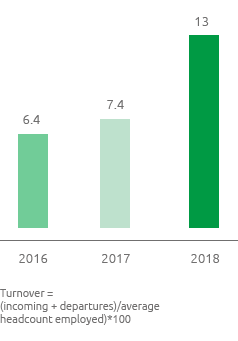Employment
Snam, in line with the goal of sustainable development “Decent work and economic growth” (SDG 8), offers a stable and constant employment relationship, mainly in Italy, with qualified and specialist activities (56% of employees have a technical diploma and 26% are graduates). 93% of personnel are on a permanent employment contract. At the end of the year, there were 41 part-time contacts and 185 apprenticeship contracts in force. During the year there were 33 workers under a staff leasing contract.
| Download XLS (16 kB) |
|
2016 |
2017 |
2018 |
Executives |
87 |
93 |
107 |
Middle Managers |
421 |
456 |
480 |
Office workers |
1,651 |
1,655 |
1,682 |
Manual workers |
724 |
715 |
747 |
Total employees |
2,883 |
2,919 |
3,016 |
Employees by activity (no.)
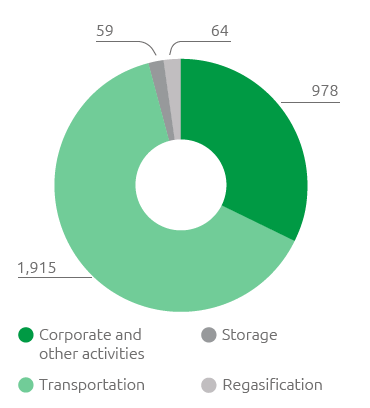
Employees by geographical area (no.)
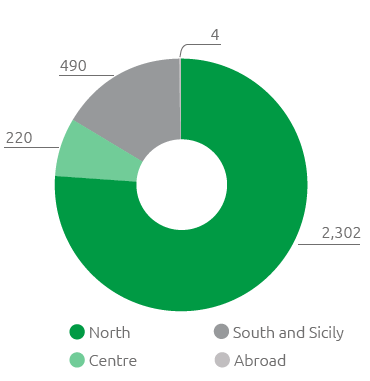
Employment dynamics
In 2018, 321 people in total joined the company, including 195 hired from the market and another 126 joined, including 61 resources as a result of the change of the scope of consolidation of Cubogas S.r.l. (from July 2018), 22 resources came through the acquisition of TEP energy solution (from June 2018), 34 resources through the acquisition of IES Biogas (from July 2018), 9 returns to service from leave of absence.
189 people left the company, including 49 as a result of the termination of their employment, 41 unilateral terminations of the employment relationship, 99 exits for “Isopensione”. There were also 10 exits for various reasons and 25 transfers to unconsolidated companies.
Employees age bracket (no.)
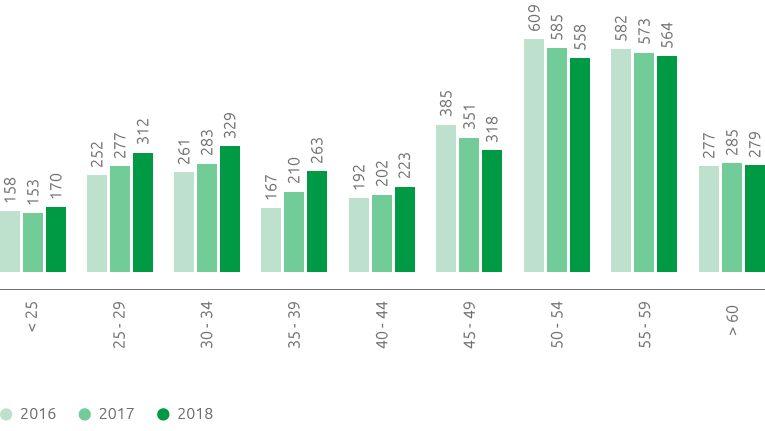
Entries and departures from market by age group (no.)
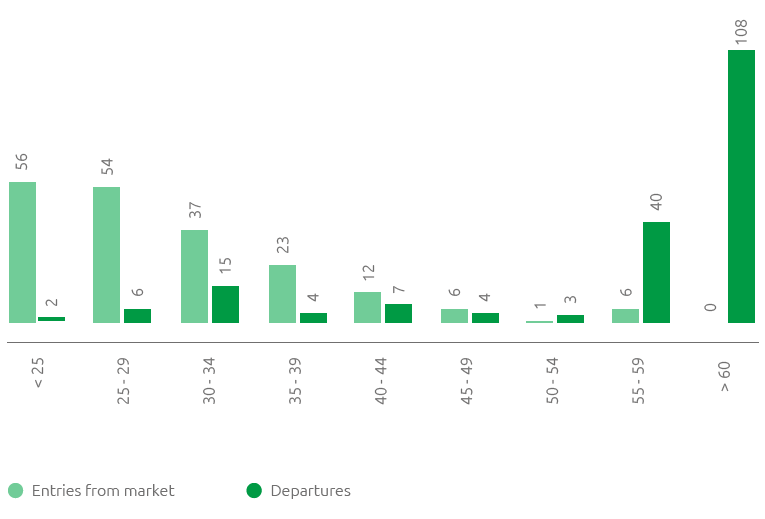
People under the age of 35 (811) represented 27% of the corporate population and increased by 98 units compared with 2017, also thanks to the constant hiring of young talent, a feature of recent years.
The absenteeism rate does not include senior managers and it was calculated taking into consideration all hours not worked (paid and unpaid) excluding holidays, catch up leaves and periods of absence from work for compulsory and optional maternity leave. In 2018 the absenteeism rate stood at 4.6%, essentially in line with the previous year and has settled at the minimum physiological values. No substantial changes are observed between the absenteeism rates for men and women, which are 4.6% and 4.8%, respectively. The 2018 turnover rate increased by 5.6% by virtue of the hiring campaign and the retirement and “isopensione” incentive campaign.
Turnover rate (%)
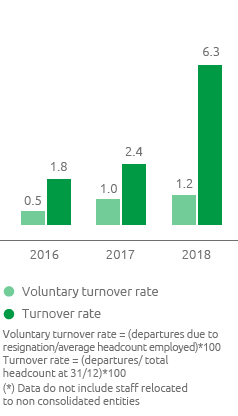
Absenteeism rate (%)
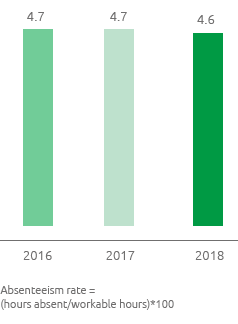
Staff turnover (%)
